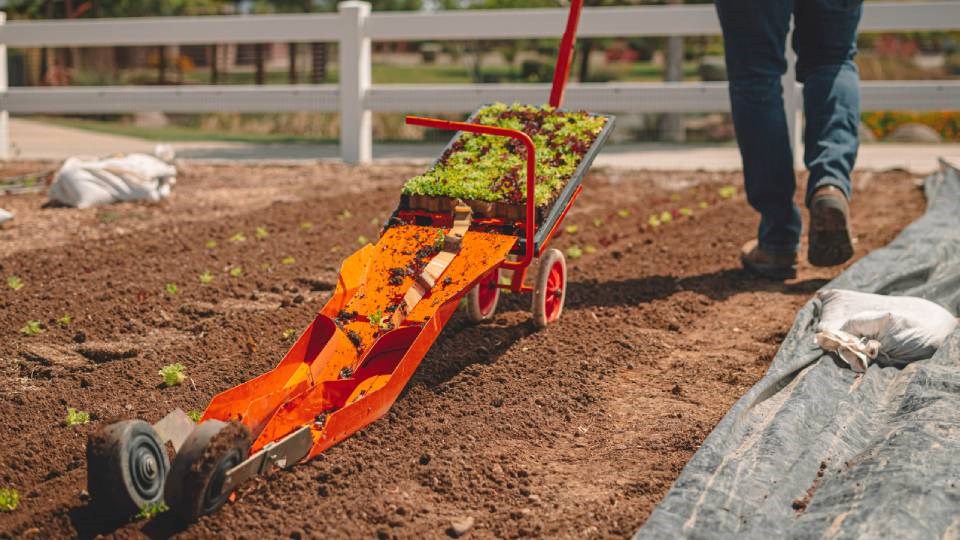Can technology help alleviate labour and climate challenges facing Northern Ontario’s horticultural sector?
That’s the question the Northern Ontario Farm Innovation Alliance (NOFIA) set out to answer during a year-long research project in conjunction with the Vineland Research & Innovation Centre.
Horticulture is a niche area within Northern Ontario’s agriculture industry, largely because of the limitations presented by climate and labour, according to Daniel Bath, a research scientist in horticultural innovation at the St. Catharines-based research centre.
“Generally, there’s not much horticulture happening relative to the rest of the agriculture activities, because it’s cold here,” Bath said. “There’s many reasons, of course, but that’s the big one.”
Bath presented the findings of NOFIA-Vineland research study during the two-day Northern Ontario Ag Conference, hosted by NOFIA in Sudbury Feb. 15-16 at the Holiday Inn.
In operation as a research station since 1904, the work done at the Vineland Research & Innovation Centre is multi-faceted. Scientists there cultivate new plant varieties, create new ag technologies using robotics and artificial intelligence, perform market research for clients, develop new approaches to greenhouse growing, and search for alternatives to pesticides and pest control.
In developing a “technology roadmap” for Northern Ontario growers, Bath said, researchers surveyed both producers and consumers to glean insight into their growing and purchasing habits.
What they confirmed is that growers in the North face several barriers, including a cold climate, which results in a shorter growing season; high costs associated with transportation, production and infrastructure; and a shortage of skilled labour.
But there are also vast opportunities to capitalize on the burgeoning demand for local produce, even with international competitors vying for a portion of the market, Bath said.
“The competition is different, in that (local growers) may have trouble matching the price, but no one’s going to match them in quality, because that lettuce that’s made its way from Mexico has been sitting for several days,” he noted. “So there’s a real competitive advantage there.”
Northern Ontario farms tend to be mostly on the small side; the average farm that's cultivating field vegetables measures 20 acres or less, Bath said.
For that reason, introducing automation to the farm may not always be viable.
In California, he noted, farmers are introducing new robotic strawberry harvesters that completely automate the picking process. But the equipment is expensive, and “unless you have a 300-acre or 400-acre strawberry farm, you’re likely not to be using a robot like this,” Bath said.
As an alternative, he suggested growers can look to the organic food industry for ideas to ease labour issues without breaking the bank. Because organic growers don’t use pesticides or herbicides, they employ very labour-intensive processes to seed and harvest.
As a result, they’ve been creative in finding ways to reduce labour on the farm, and there are companies catering to this demographic.
Terrateck, a France-based company, produces hand-drawn carts used in preparing beds for seeding, while Farmers Friend, a U.S. company, has developed a harvesting tool for lettuce that draws its energy from a battery-powered hand drill. The Paperpot Company, also based in the U.S., manufactures a transplanting machine that organizes plants into a single line and plants them in a row.
“Simple innovations like this (are) not exactly automation, but mechanization can really have a positive impact on small operations,” Bath said.
Northern Ontario’s climate is another issue.
But Bath said growers can make strategic decisions about what and how they’re planting in order to be more successful.
They can focus on growing cold-tolerant varieties, he suggested, like the radiance sweet potato, a variety his group developed in-house that’s currently being grown in Manitoba, PEI and Alberta.
“As genetics and technology are being used to develop new varieties, we can expect better production here in the North,” Bath said.
Growers can also landscape in a way that flows cold air away from sensitive plants, or use row covers and hoop houses to help shelter crops in colder weather. Growing in a controlled environment, using a greenhouse or indoor growing system, are other ways in which producers can stretch the season.
Bath noted that climate change is also having an impact on Northern Ontario.
As the climate warms, northern growers can expect to see an increase in growing days as well as in the number of horticultural crops that will successfully grow in the North, he said.
But they have to be aware that climate change is also expected to bring with it an increase in extreme weather events.
“So it’s important, as we think about taking advantage of the warmer weather, to think about mitigating the risks that come associated with it,” Bath said.
A full report on the study from the Vineland Research & Innovation Centre is expected to be released shortly.
